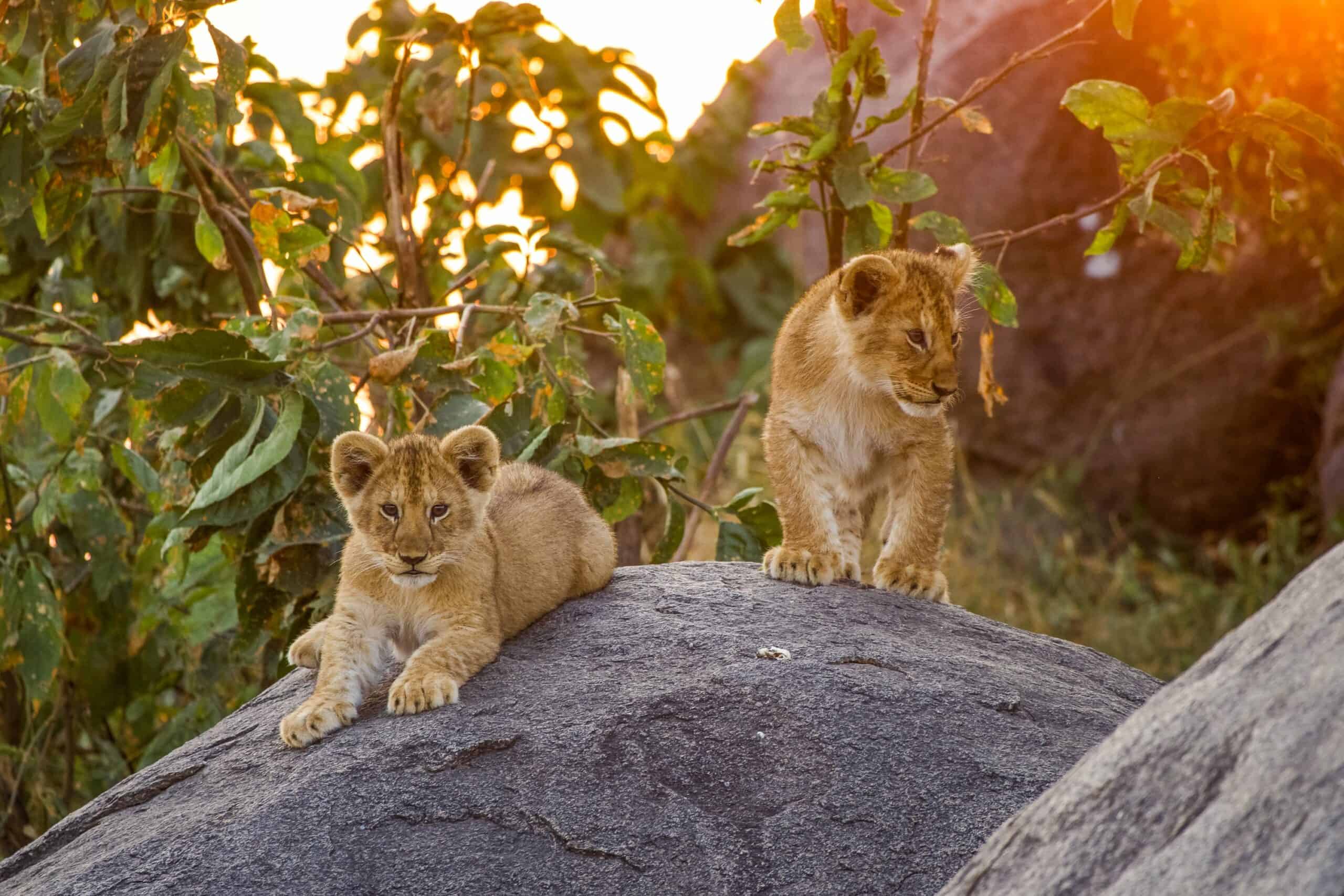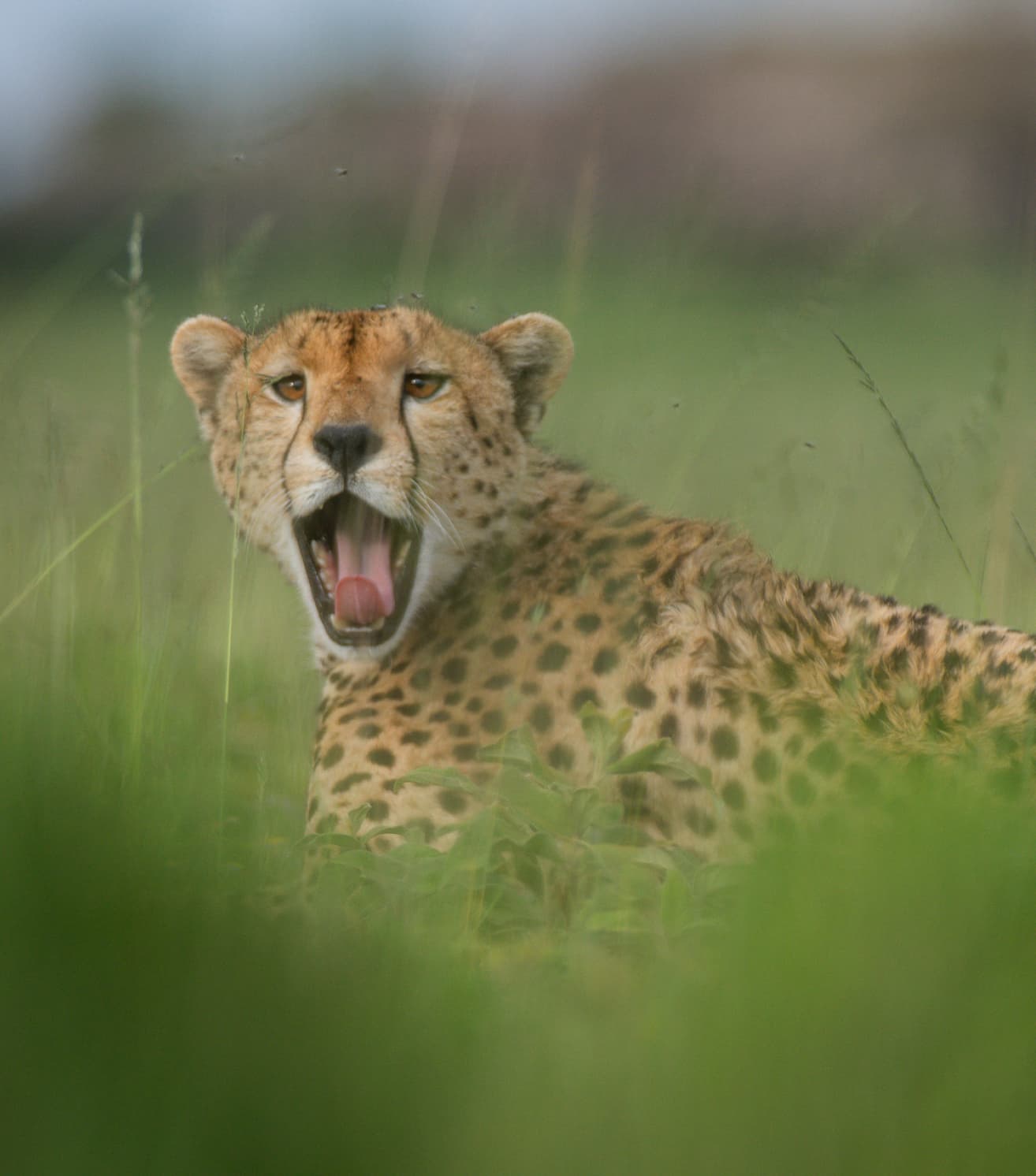

The Best Time to Safari in Northern Tanzania
The short answer to the question “When is the best time to Safari in northern Tanzania?” is: “All year round!” There is a reason in every season why you would want to be guided through the Serengeti, Randilen and Lake Eyasi.
Take your Pick from Seasonal Highlights

Ultimately, choosing the best time is dependent on your interests and what you want to experience: the migrant bird arrivals, key stages of the Great Migration, massing of Elephant herds, calving and rutting, the dramatic seasonal landscape changes, or the moods of the endless skies…
With a tropical climate and daytime temperatures shifting just 10 degrees from 30 deg C to 20 deg C between the hottest and cooler months (but chillier in the northern Serengeti), Tanzania’s seasons are best divided into short rains, Green Season, long rains and dry season.
Here is an idea of what you can expect:
Short Rains Signal Migration Herds (Nov – Dec)

The short rains on the Serengeti, called vuli, is a brief – albeit unpredictable – period of rainfall from late October to early December that sees the Great Migration herbivores move back south out of the woodlands in their hundreds of thousands to feast on fresh vegetation.
It is a time of dramatic change and rebirth of the landscape as browns change to succulent green. And, as the Wildebeest and Zebras begin to congregate and merge with the abundant resident wildlife, the predators follow to create wilderness drama.
Entara’s Olmara Camp, offering walking safaris and fly camping, is ideal for wildlife viewing at this time of year.

Briefly Dry but Green (Jan – Mar)
The short, dry season is known as the Green Season when the region is transformed into a lush paradise for wildlife to take full advantage of the new vegetation to nourish and nurture.
Nurture, because it is also the time for the great migration herds to begin calving. This mass birthing of around 400 000 calves fills the plains around Entara’s Olmara Camp with a celebration of young life. Nature, however, is a delicate balance of light and shadow, so expect to see a full cast of Big Cats and other predators in action at this time.

The Palearctic bird migration also arrives during the Green Season. Migratory Eagles, Storks, Wheatears, Rollers, Kestrels and Pipits, among many others, travel south from Europe, Central Asia and the Middle East to East Africa for the winter.
At this time, Entara’s Esirai Camp relocates to the centre of the southern short-grass plains of the Serengeti for guests to enjoy this season of plenty.
Long Rains … After Hours Mostly (Apr – May)
“Entara is like no other safari operation I know. It is run by highly experienced former Guides, so they really understand the wilderness, have a real love for northern Tanzania and know what will give guests a unique and intimate experience with a personal touch,” says Said, Head Guide for Entara Lodges and Camps.
Said is mainly based at Olmara Camp in the eastern Serengeti’s remote Ngare Nayuki River Valley which is known for its big cats, as a haven for wildlife photographers, and for fly camping experiences.

This season brings long rains (called masika) to the north. But don’t let that deter you because rains usually fall at night, leaving the air crisp and dust-free during the day. The skies present with unique cloud formations, offering spectacular photographic backgrounds.
As the wet season comes to an end, the plains dry out and the herbivores move toward the northwest in search of greener pastures and water sources. The Wildebeest calves, now stronger, join the migration with their mothers toward new feeding grounds.
But before the herds leave, the all-important annual Wildebeest mating event must take place. Called rutting season, it is a wild extravaganza of procreation that has to be witnessed to be fully appreciated, along with the predators taking advantage of the exhausted bulls.
If this is not enough to attract you during Green Season, consider Cheetahs dropping their cubs and the Thomson Gazelle migration occurring on the eastern plains too.
Dry Season Reveals all (Jun – Oct)
Once the grasses have dried out, the herbivores must move long distances to find food and water. Dry season is “traditional” safari time when animals are forced to gather around water holes, making game spotting easier.

At this time, the Wildebeest and Zebras start their months-long migration towards the Northern Serengeti, followed by hyenas and vultures, where they will ultimately face down Crocodiles during the treacherous Mara River crossing. Entara’s Esirai Camp relocates to the Northern reaches of Serengeti to a position chosen for a prime wildlife experience, access to the Mara River crossing action, and superb access to walking trails and game drive circuits.

Down south, it is Tarangire Elephant Migration season, where over 3 000 elephants migrate to the Tarangire River Valley and surrounding swamps for fresh water and vegetation. Entara’s Olkeri Camp is ideally located to enjoy this.

Immerse Yourself in Culture and Wilderness Year-round
Whatever the weather, a northern Tanzania safari offers a year-round immersive experience, including cultural encounters with the Hadza hunter-gatherers while fly camping at Lake Eyasi, or meeting up with the Datoga and Maasai from Entara’s Kisima Ngeda Camp.


The Best Time to Safari in Northern Tanzania

It’s a Wild Life for Head Guide, Said Kotoku








